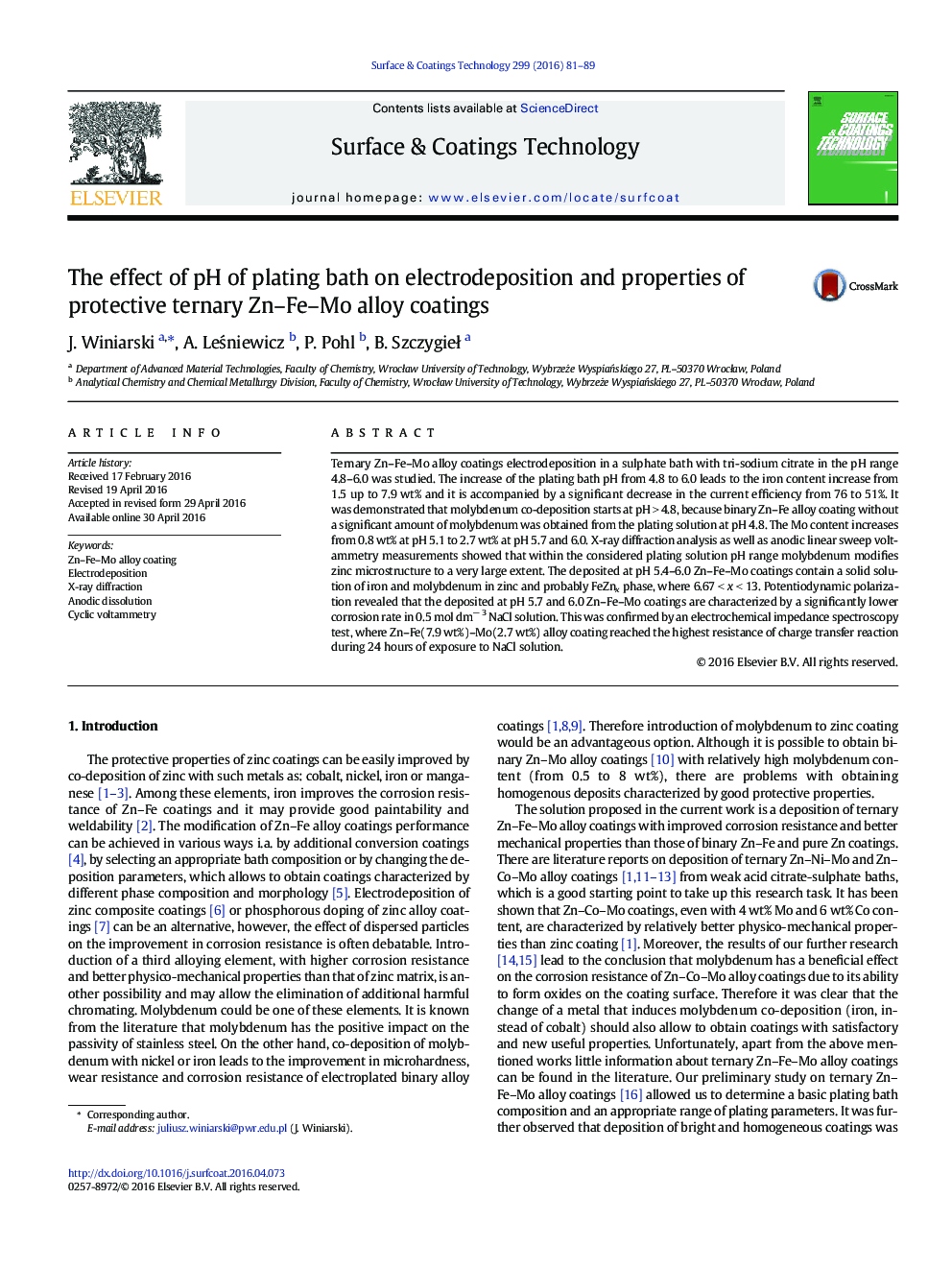| Article ID | Journal | Published Year | Pages | File Type |
|---|---|---|---|---|
| 1656365 | Surface and Coatings Technology | 2016 | 9 Pages |
•Zn–Fe–Mo coatings can be deposited from sulphate-citrate baths in pH range: 5.4–6.0.•Deposition of bright and homogenous Zn–Fe–Mo coatings is possible at pH close to 5.7.•The content of Fe and Mo in ternary alloy coatings depends on the pH of plating bath.•Codeposition of Mo causes an increase of Fe amount in Zn–Fe–Mo coating.•Increase in Mo and Fe contents shift corrosion potentials towards noble potentials.
Ternary Zn–Fe–Mo alloy coatings electrodeposition in a sulphate bath with tri-sodium citrate in the pH range 4.8–6.0 was studied. The increase of the plating bath pH from 4.8 to 6.0 leads to the iron content increase from 1.5 up to 7.9 wt% and it is accompanied by a significant decrease in the current efficiency from 76 to 51%. It was demonstrated that molybdenum co-deposition starts at pH > 4.8, because binary Zn–Fe alloy coating without a significant amount of molybdenum was obtained from the plating solution at pH 4.8. The Mo content increases from 0.8 wt% at pH 5.1 to 2.7 wt% at pH 5.7 and 6.0. X-ray diffraction analysis as well as anodic linear sweep voltammetry measurements showed that within the considered plating solution pH range molybdenum modifies zinc microstructure to a very large extent. The deposited at pH 5.4–6.0 Zn–Fe–Mo coatings contain a solid solution of iron and molybdenum in zinc and probably FeZnx phase, where 6.67 < x < 13. Potentiodynamic polarization revealed that the deposited at pH 5.7 and 6.0 Zn–Fe–Mo coatings are characterized by a significantly lower corrosion rate in 0.5 mol dm− 3 NaCl solution. This was confirmed by an electrochemical impedance spectroscopy test, where Zn–Fe(7.9 wt%)–Mo(2.7 wt%) alloy coating reached the highest resistance of charge transfer reaction during 24 hours of exposure to NaCl solution.
Graphical abstractFigure optionsDownload full-size imageDownload high-quality image (598 K)Download as PowerPoint slide
